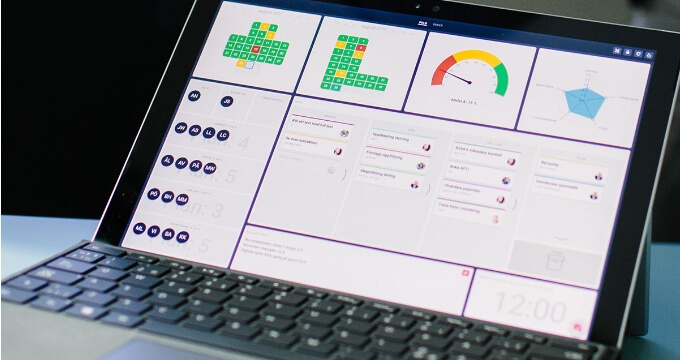Research from University of Linköping
In 2019, Emelie Havemo of the University of Linköping conducted a research project on the impact of digitizing boards for daily meetings in organizations working with Lean Management. Mevisio provided access to associates within a select number of organizations to support Emilie’s research project. Emelie has written the report in Swedish and given Mevisio permission to translate into English to publish on our blog. Over the course of the next couple of weeks, we will be publishing excerpts from the report. You can download the full report here (in Swedish).
Digital transformation can change the role of the lean board – or not.
Digital boards can change the role of traditional whiteboards in daily management. The most significant differentiator is the new way to interact during meetings and access to real-time data on the board. A digital board raises several questions; one being ‘is a physical board needed?’. Can managers and teams collaborate without meeting physically? Is everyone required to be in the same room, let alone at the same facility? At the same time, a real value-add when using a board during the daily meeting is that it forms part of a system and a process where individual parts cannot be changed immediately. Digital boards have many shapes and forms.
Digital boards can be configured in different ways, depending on the purpose they serve and what the users want to achieve. This report discusses two different approaches to handling the digital transformation for daily management boards. The report is based on the literature used regarding digitalization. 1) Digitizing the flow of information (making analog boards digital) and 2) Digitalizing the infrastructure used to support daily meetings by using customizability and access to more data. Organizations considering these two options should align their choice with information and co-ordination needs as both approaches have pros and cons.
Tips for implementing and using digital lean boards
By interviewing and researching three organizations, this report identifies tips and success factors for implementing digital lean boards. The tips and recommendations take into account that user needs, interest, knowledge, know-how, and experience have a significant impact on results. The recommendations are for influencers and decision-makers for lean management within an organization. This can be managers, lean specialists, and lean consultants.
Get started with digital lean boards – 6 recommendations and success factors.
- Identify the needs of the organization
- Review the organization’s digital competencies
- Conduct a risk analysis and weigh these against expected benefits
- Create a culture of learning and development before, during and after implementation
- Find the "low-hanging fruits" (quick and easy improvements) to start with
- Start with testing in a smaller environment and use insights gained


